by Irina Tsukerman
The Fault Lines of Modern Nationalism
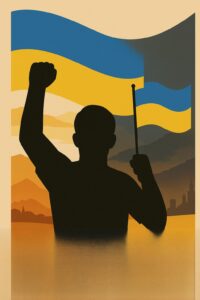
In an age where the term “nationalism” is wielded as both a rallying cry and a slur, few global events have so sharply illuminated its true meaning as the ongoing war in Ukraine. What began as a brutal and illegal invasion by Russia has become a Rorschach test for movements around the world that claim to champion national sovereignty. On one side stands Ukraine, fiercely defending its right to self-determination, language, and history. On the other stands Russia, led by an imperial ideology that seeks to erase borders, histories, and distinct cultures under the guise of civilizational unity. Watching from afar is the United States, where the MAGA movement-rooted in restoring American sovereignty and resisting supranational entanglements-faces its own dilemma: which nationalism do we support?
In the early decades of the twenty-first century, the word “nationalism” has become a lightning rod in global discourse. It evokes pride and suspicion, hope and dread, often in equal measure. For some, nationalism is a bulwark against the flattening forces of globalization-a defense of language, memory, and the right to self-govern. For others, it is a specter conjuring memories of exclusion, chauvinism, and the darkest chapters of the twentieth century.
Nowhere are these contradictions more vividly on display than in the war unleashed by Russia against Ukraine. What began as a brazen violation of borders in 2014, and escalated into a full-scale invasion in 2022, has become more than a regional conflict. It is a crucible in which the meaning of sovereignty, identity, and resistance is being tested before the eyes of the world.
On the streets of Kyiv, Kharkiv, and Odesa, the struggle is not just for territory but for the right to exist as a distinct people-with their own language, history, and vision of the future. In the trenches and bomb shelters, Ukrainians have rediscovered and redefined their nationhood, forging a civic identity that transcends old divisions of language, faith, and region. Their resistance is not a quest for empire, but a declaration that no outside power has the right to erase their story.
Across the border, Russia has invoked its own narrative-a vision steeped in imperial nostalgia and civilizational myth. Through the rhetoric of Vladimir Putin and the philosophy of Alexander Dugin, the Kremlin has sought to justify aggression as a sacred mission, a reunification of lands and peoples allegedly torn apart by the artificial lines of history. In this telling, the sovereignty of Ukraine is denied, its language dismissed, its very existence reduced to a Western plot.
This confrontation has sent shockwaves far beyond Eastern Europe. In the United States, the debate over nationalism has become a central fault line in politics and culture. The rise of the MAGA movement, with its calls to “Make America Great Again,” reflects a profound unease over lost sovereignty, porous borders, and the erosion of national identity. Yet, even as some Americans look abroad for models or allies-whether to the assertive traditionalism of Russia or the embattled patriotism of Ukraine-the question remains: what does it truly mean to be a nationalist in the modern world?
Beneath the headlines and propaganda, the war in Ukraine has forced a reckoning with the very foundations of national life. It has exposed the difference between a nationalism rooted in memory, pluralism, and self-determination, and one that seeks to erase difference in the name of empire. It has shown that the defense of sovereignty is not just a matter of borders and armies, but of language, culture, and the courage to say “no” to those who would dictate the future from afar.
As the world watches Ukraine’s struggle, the stakes could not be higher. The outcome will reverberate in capitals and communities far beyond Kyiv or Moscow. It will shape how nations understand themselves, how they relate to their neighbors, and how they balance the demands of tradition, freedom, and belonging in an age of uncertainty. In this crucible, the meaning of nationalism-its dangers, its promise, and its enduring necessity-is being rewritten for a new generation.
- Ukraine’s Nationalism: Borders, Blood, and a Renewed Identity
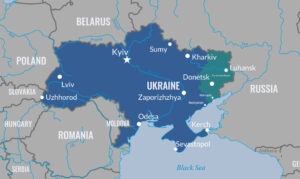
The story of Ukrainian nationalism is not one of sudden invention or borrowed slogans, but of a people’s long and often painful journey toward self-realization. It is a nationalism tempered by tragedy, revived by resistance, and defined not by exclusion, but by the stubborn insistence on the right to exist and to choose one’s own destiny. In the crucible of the twenty-first century, Ukraine has become a living testament to the power of civic identity, pluralism, and the enduring value of sovereignty.
The Roots of a Nation: Memory, Trauma, and the Long Road to Selfhood

To understand Ukrainian nationalism, one must begin with the land itself-a crossroads of empires, a patchwork of languages and faiths, a place where history’s tectonic plates have always collided. From the medieval heights of Kyivan Rus’, through the Cossack rebellions, to the centuries of partition, colonization, and forced assimilation, Ukraine’s people have been shaped by a relentless struggle to maintain their voice amid the roar of foreign powers.
The trauma of the twentieth century is etched into the Ukrainian soul. The Holodomor, Stalin’s man-made famine, was not simply a crime against humanity-it was an attempt to erase a nation by starving it of memory, language, and hope. [1] The Nazi occupation, the Holocaust on Ukrainian soil, the postwar purges and Russification campaigns-each left scars, but also a fierce determination to survive as something more than a province or a periphery.
It is this legacy that gives Ukrainian nationalism its distinct character. Unlike the imperial nationalisms of the past, Ukraine’s is not a project of expansion or ethnic purity. It is a nationalism of restoration, one that seeks to reclaim what was stolen, to honor the dead, and to ensure that no one else will ever have the power to write Ukrainians out of their own story.
Pluralism Forged in Adversity: The Civic Heart of Ukrainian Identity

What makes Ukrainian nationalism so remarkable is its embrace of pluralism. For centuries, Ukraine was a meeting place of Slavs, Jews, Tatars, Poles, Armenians, Greeks, and others. Its cities-Kyiv, Lviv, Odesa, Kharkiv-were cosmopolitan long before the word became fashionable. [2] This diversity was often a source of vulnerability, exploited by empires to divide and rule. But in the fires of the Maidan Revolution and the war that followed, it became a source of strength. [3]
When Russia invaded in 2014, and again in 2022, it expected to find a fractured society-a country divided by language, region, and history. Instead, it encountered a nation more united than ever. Russian-speaking Ukrainians from Kharkiv and Odesa, Crimean Tatars, Hutsuls from the Carpathians, and Jewish volunteers from Dnipro all stood together to defend their homeland. [4] The old Soviet-era divisions faded, replaced by a new, inclusive patriotism.
This pluralism is not a mere rhetorical flourish. It is enshrined in law and lived in practice. The Ukrainian state, while promoting the national language and culture, also protects minority rights.[5] The 2022 Law on National Minorities guarantees educational and cultural rights for all communities. In the army, on the front lines, and in parliament, one finds a tapestry of identities united by a shared commitment to sovereignty and democracy.
Language and Memory: Restoration, Not Erasure
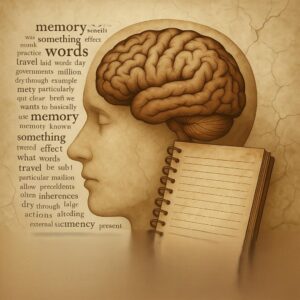
Much has been made-especially in Russian propaganda-of Ukraine’s language policies and decommunization laws. [6] Critics accuse Ukraine of “Russophobia” and cultural erasure. But these policies are not about exclusion; they are about restoration. For centuries, the Ukrainian language was suppressed by imperial edicts and Soviet policies. The promotion of Ukrainian as the state language is an attempt to reverse this legacy, to give Ukrainians the right to speak, write, and dream in their own tongue. [7]
Decommunization, too, is not an act of historical amnesia but of reckoning. [8] The removal of Lenin statues, the renaming of Soviet-era streets, the public commemoration of the Holodomor-these are not efforts to erase the past, but to confront it honestly. [9] They are an attempt to honor the victims of totalitarianism and to reclaim a national narrative that was stolen by foreign rulers. This process is sometimes painful and controversial, but it is essential for the healing of a post-colonial society. [10]
Zelensky: The Embodiment of Modern Nationalism
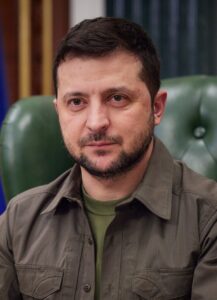
If Ukraine’s civic nationalism has a face, it is Volodymyr Zelensky. His story is, in many ways, the story of modern Ukraine-a story of unlikely transformation, resilience, and the power of pluralism. Born in the industrial heartland, a Russian-speaking Jew with roots in both the Soviet and Ukrainian worlds, Zelensky was an outsider to politics. [11] His rise from comedian and actor to president was, at first, dismissed by many as a fluke, a symptom of a country exhausted by corruption and cynicism.
But when the storm came, Zelensky proved himself a true nationalist leader-not in the narrow sense of ethnic chauvinism, but in the deeper sense of embodying the nation’s pluralism, courage, and will to survive. His nightly addresses, delivered in both Ukrainian and Russian, rallied the nation and inspired the world. He refused to flee Kyiv when the bombs began to fall, famously declaring, “I need ammunition, not a ride.” [12] In doing so, he became the living refutation of Kremlin narratives that painted Ukraine as a failed state or a fascist enclave.
Zelensky’s nationalism is not about exclusion or vengeance. It is about dignity, memory, and the right to choose. He has reached out to minorities, defended religious freedom, and insisted that Ukraine’s future lies in its diversity. Under his leadership, the country has not turned to dictatorship or scapegoating, but to a deeper, more inclusive democracy. In the crucible of war, Zelensky has become not just a symbol, but a catalyst for the civic nationalism that defines Ukraine’s resistance.
Standing Up to External Pressures: The Mark of a True Nationalist

What sets Zelensky apart-and what should command the respect of “America First” nationalists-is his refusal to be cowed or co-opted by any foreign power, whether adversary or ally. He has stood up to Russia with unyielding resolve, refusing to accept any “peace” that would mean the loss of Ukrainian territory or sovereignty. [13] When Western leaders, including those in Washington, have pressured him to make concessions for the sake of expediency or to serve their own domestic agendas, Zelensky has politely but firmly drawn the line. He has accepted aid and partnership, but not at the cost of Ukraine’s independence or dignity. [14]
This is not the posture of a vassal or a puppet. It is the stance of a leader who understands that true sovereignty means making hard choices-and sometimes, saying “no” even to friends. Zelensky’s insistence on Ukrainian agency, his ability to negotiate with the United States and Europe without surrendering his country’s core interests, is precisely what American nationalists claim to admire in leaders like Hungary’s Viktor Orbán. Yet unlike Orbán, whose “nationalism” often masks a willingness to play East against West for personal or political gain, Zelensky’s vision is rooted in genuine self-determination and civic unity. [15]
He has faced down Russian ultimatums, Western fatigue, and even criticism from within Ukraine itself. He has refused to trade land for peace, to allow Ukraine’s future to be decided in foreign capitals, or to let the sacrifices of his people be bartered away for diplomatic convenience. This is the essence of real nationalism: not belligerence, but the courage to defend sovereignty against all comers, to be a partner but never a pawn.
Defensive, Not Expansionist: The True Nature of Ukrainian Patriotism

Perhaps the greatest misunderstanding about Ukrainian nationalism is the notion that it is aggressive or revanchist. In reality, it is fundamentally defensive. Ukraine does not seek to redraw its neighbors’ borders, export its model, or impose its values by force. It asks only to be left alone-to govern itself, protect its language, and remember its history. This is the essence of sovereignty, the core of the postwar international order, and the very principle that movements like MAGA claim to uphold.
Ukraine’s fight is not for empire, but for survival. Its nationalism is not a threat to the world, but a rebuke to the imperialism that has so often brought tragedy to Eastern Europe. In this, Ukraine stands not only for itself, but for the universal right of nations to exist, to remember, and to choose.
A Mirror for the West

In the end, Ukrainian nationalism is a mirror held up to the world. It shows that true patriotism is not about blood or soil, but about shared values, mutual sacrifice, and the courage to defend freedom in the face of overwhelming odds. It is a reminder that pluralism is not a weakness, but the wellspring of resilience. And it is a warning that the erasure of memory, language, and difference is always the prelude to tyranny.
Ukraine’s struggle, and Zelensky’s leadership, offer a blueprint for a new kind of nationalism-one that is rooted in history but open to the future, proud but not arrogant, pluralistic but not rootless. It is a nationalism that begins at home, but whose defense is a universal imperative. In the shadow of empire, Ukraine has found its voice. And in doing so, it has reminded the world what it means to be a nation.
II. Russia’s Pan-Eurasianist Fantasy: The Graveyard of Sovereignty

If Ukraine’s modern nationalism is a story of a people rediscovering themselves after centuries of erasure, Russia’s Eurasianist project is the story of an empire refusing to let go of its ghosts. The contrast could not be starker. Where Ukraine’s identity is forged in the fires of pluralism and self-determination, Russia’s is built atop the ruins of conquered nations, wrapped in the mystical rhetoric of destiny, and articulated most clearly by the philosopher and ideologue Alexander Dugin.
To understand the true nature of Russia’s so-called “nationalism,” one must look beyond the surface pageantry of flags, parades, and Orthodox iconography. At its heart, the Eurasianist vision is not about the flourishing of the Russian nation, but about the subjugation of all others. It is an imperial project dressed up as a civilizational mission-a fantasy that seeks to dissolve the very concept of national sovereignty in a sea of imperial nostalgia.
Dugin’s Eurasianism: Empire Masquerading as Nationalism
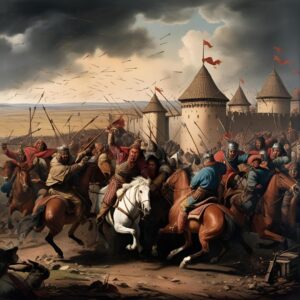
Alexander Dugin’s Foundations of Geopolitics is not just a book; it is a blueprint for the resurrection of empire. [16] Dugin’s worldview is unapologetically anti-Western, anti-liberal, and, crucially, anti-nationalist in the classical sense. He envisions a vast Eurasian bloc, stretching from Vladivostok to Lisbon, united not by shared civic values or mutual respect, but by the gravitational pull of Moscow. In Dugin’s schema, Ukraine is not a nation but a “borderland”-a mere geographic expression, a pawn to be absorbed or erased in the service of a greater Eurasian unity.
This is not a new idea. Russian history is replete with efforts to subsume neighboring peoples under a singular imperial identity. From the forced Russification of Poles, Finns, and Tatars in the nineteenth century, to the Soviet Union’s brutal suppression of Baltic, Central Asian, and Caucasian cultures, the Russian state has always sought to expand not just its territory, but its very definition of who belongs and who does not. [17] Dugin’s Eurasianism repackages this imperial drive for the twenty-first century, cloaking it in the language of “tradition,” “spirituality,” and “multipolarity.”
What makes Dugin’s vision especially insidious is its seductive appeal to those disenchanted with the West’s perceived decadence. He offers an alternative to liberal democracy: a world of civilizations locked in eternal struggle, where power, not principle, determines the fate of nations. In this world, sovereignty is a privilege reserved for the strong; the weak are expected to submit, assimilate, or vanish.
The Anti-Nationalist Core: Why Eurasianism Destroys Nations

Despite its trappings, Dugin’s Eurasianism is fundamentally anti-nationalist. [18] True nationalism, whether in Ukraine, America, or elsewhere, is about the right of a people to self-determination, the preservation of their language, culture, and history, and the sanctity of their borders. Dugin’s project, by contrast, is about the erasure of all such distinctions beneath the boot of empire. In his Eurasianist vision, the nation-state is a Western invention-an obstacle to be overcome, not a community to be cherished.
Dugin’s writings explicitly denounce the “narrowness” of national feeling, calling instead for a “civilizational” unity that transcends ethnic, linguistic, and historical boundaries. But in practice, this unity is nothing more than the enforced homogenization of all under Moscow’s rule. The fate of Ukraine in this vision is instructive: its language, its culture, its very memory of independence must be erased, so that the “greater Eurasia” can be born.
This is not an accident. Eurasianism is the ideological heir to the Mongol-Tatar yoke, a period when the Russian principalities were vassals to the Mongol Empire. Dugin and his followers do not shy away from this legacy; instead, they embrace it. They see Russia’s historical subjugation as a source of spiritual strength, a mark of its difference from the West. In so doing, they invert the very logic of nationalism: rather than resisting foreign domination, they celebrate it as the crucible of Russian identity.
The Mongol Legacy: Subjugation as Destiny
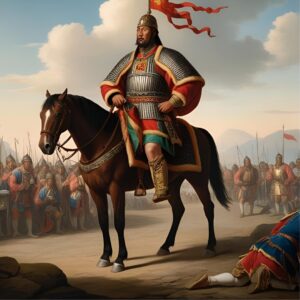
The paradox of Dugin’s Eurasianism is that, in seeking to build a new empire, it invites the dissolution of Russia’s own national identity. By glorifying the Mongol period, Dugin signals a willingness to subordinate Russian culture to a broader, amorphous Eurasian “civilization.” The Mongol yoke, which for centuries was remembered in Russian folklore as a time of humiliation and loss, is recast as a spiritual apprenticeship-a necessary prelude to Russia’s imperial mission.
But this embrace of subjugation carries a profound danger. In exalting the Mongol legacy, Dugin opens the door for Russia itself to be subsumed-culturally, demographically, and spiritually-by the very forces it claims to command. The Eurasianist project, far from preserving Russian identity, threatens to dissolve it in a sea of borrowed traditions and imperial abstractions.
Already, we see the consequences. The Russian Far East is increasingly oriented toward China, not Moscow. Central Asian republics, once tightly bound to the Soviet center, are asserting their own languages and histories. Within Russia itself, dozens of non-Russian peoples-Tatars, Bashkirs, Chechens, Buryats-struggle to preserve their cultures against both Russification and the flattening pressures of Eurasianism. In the end, Dugin’s vision may not only erase Ukraine, Georgia, or Kazakhstan; it may erase Russia itself.
Tradition as a Weapon: The Façade of Conservative Values
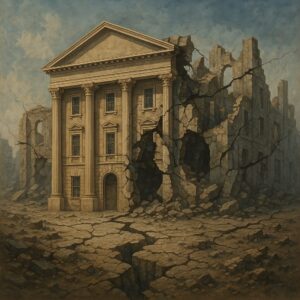
Dugin’s Eurasianism presents itself as a defense of “traditional values” against the encroachments of Western liberalism. Orthodox Christianity, patriarchal family structures, reverence for authority-all are invoked as bulwarks against the chaos of modernity. But this is a hollow traditionalism, stripped of its organic roots and pressed into the service of state power.
In practice, the Russian state’s relationship to tradition is profoundly cynical. The Orthodox Church is not a counterweight to the state, but its instrument. Dissenting clergy are silenced, religious minorities are persecuted, and the language of faith is used to justify everything from censorship to military aggression. The result is not a revival of spiritual life, but its subjugation to the needs of empire.
This is not true conservatism. The conservative tradition, whether in the writings of Edmund Burke or the American Founders, is wary of centralized power and values the organic growth of institutions from below. Dugin’s vision, by contrast, is top-down, authoritarian, and allergic to the messy realities of pluralism. It offers not the preservation of tradition, but its fossilization. [19]
The Rejection of Pluralism: Homogeneity by Force

Perhaps the most dangerous aspect of Eurasianism is its rejection of pluralism. Dugin’s ideal Eurasia is not a federation of equal nations, but a hierarchy in which Moscow decides which cultures, languages, and religions are permitted to exist. Diversity is tolerated only to the extent that it does not threaten the unity of the empire.
History shows the consequences of such thinking. The Soviet Union’s attempts to mold a “Soviet people” led to the suppression of dozens of national languages and the forced relocation of entire populations. Nazi Germany’s quest for racial purity ended in genocide. In every case, the pursuit of homogeneity leads not to harmony, but to violence and decay.
Ukraine’s pluralistic nationalism stands as a rebuke to this vision. Its strength lies in its ability to integrate difference, to build unity from diversity. This is not a weakness, but a source of resilience-a lesson lost on those who mistake uniformity for strength.
The Allure and Cost of Empire

Why does the Eurasianist fantasy persist? For many in Russia’s elite, it offers a way to recapture lost prestige, to compensate for economic stagnation and demographic decline with dreams of imperial grandeur. It is easier to blame the West, or “foreign conspiracies,” for Russia’s woes than to confront the failures of governance at home. [20]
But the costs of empire are always high. The pursuit of dominance abroad requires repression at home. The resources spent on war and propaganda are resources not invested in schools, hospitals, or innovation. The imperial mindset breeds paranoia, corruption, and a culture of fear. In the end, it is the Russian people themselves who pay the highest price for their leaders’ ambitions. [21]
The MAGA Lesson: Real Nationalism Respects Borders

For American nationalists, the lesson of Dugin’s Eurasianism is clear. True nationalism is not about the expansion of power, but the defense of self-government. It is not about imposing one’s will on others, but about respecting the right of every nation to chart its own course. The world Dugin envisions-a world of empires, not nations-is a world in which sovereignty belongs only to the strong, and freedom is always at risk. [22]
If the MAGA movement is to remain true to its own principles, it must reject the Eurasianist temptation. It must recognize that the defense of American sovereignty is inseparable from the defense of sovereignty everywhere. The right to self-determination, the sanctity of borders, the value of pluralism-these are not Western impositions, but universal principles. To betray them abroad is to endanger them at home. [23]
The Graveyard of Sovereignty

In the final analysis, Russia’s Pan-Eurasianist fantasy is not a path to renewal, but a recipe for decline. It offers the illusion of greatness at the cost of freedom, the promise of unity at the expense of diversity, the spectacle of tradition without its substance. It is, in every sense, the graveyard of sovereignty-not only for Russia’s neighbors, but, ultimately, for Russia itself. [24]
Ukraine’s resistance, by contrast, is a testament to the enduring power of real nationalism-a nationalism rooted in memory, belonging, and the right to be different. It is a reminder that the future belongs not to those who seek to erase borders, but to those who are willing to defend them.
III. Real Nationalism Begins at Home

If the war in Ukraine has taught the world anything, it is that the defense of sovereignty does not begin on distant battlefields or in the halls of international diplomacy. It begins, always, at home. The lesson is as old as the nation-state itself: a people’s freedom is only as strong as their willingness to claim it, nurture it, and defend it within their own borders. For Americans, and especially for those who rally to the cry of “America First,” this lesson is both a call to action and a challenge to self-examination.
The Foundations of American Civic Nationalism

America’s own tradition of nationalism was never meant to be a mere echo of Old World blood-and-soil ideologies. The United States was founded on a radical experiment: that a nation could be built not on ethnicity or religion, but on shared principles, civic participation, and the rule of law. The Founders drew inspiration from ancient republics and Enlightenment thinkers, but they also understood the dangers of unchecked power and the seductions of empire. In Federalist No. 10, James Madison warned of the “mischiefs of faction,” while George Washington’s Farewell Address cautioned against “entangling alliances” and the loss of national independence.
Yet, even as America grew into a world power, it never lost sight of the idea that sovereignty is rooted in the daily lives of its citizens: in the right to speak freely, to worship as one chooses, to assemble, to petition, and to hold government accountable. The Bill of Rights is not just a legal document; it is the DNA of American nationalism-a constant reminder that the nation’s greatness depends on the freedom and dignity of its people.
The Erosion and Renewal of Sovereignty
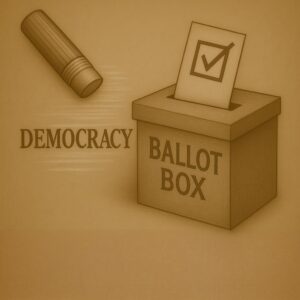
In recent decades, however, many Americans have felt that this tradition has been eroded. Factories closed, communities hollowed out, and decisions about trade, borders, and even war seemed to be made by distant elites in Washington, Brussels, or Beijing. The rise of supranational organizations, multinational corporations, and global supply chains brought prosperity to some, but left others feeling powerless in their own country. The sense that America was losing control-of its economy, its culture, its destiny-fueled the populist backlash that gave rise to the MAGA movement.
But the answer to this crisis is not to retreat into isolation or to scapegoat outsiders. Instead, it is to return to the hard work of national renewal. This means investing in the institutions that sustain civic life: schools that teach history and critical thinking, local governments that empower citizens, media that inform rather than divide, and a political culture that values debate over dogma. It means rebuilding the physical infrastructure-roads, bridges, factories, energy grids-that makes real independence possible. And it means cultivating a sense of national purpose that is inclusive, forward-looking, and rooted in the lived experience of ordinary Americans.
Domestic Manufacturing: Revitalization, Not Regression

When advocates of American sovereignty and economic renewal call for “bringing manufacturing home,” there is often a misunderstanding-sometimes encouraged by critics, sometimes by nostalgic rhetoric-that this means a return to the smokestacks and sweatshops of the early twentieth century. But true economic nationalism, in the spirit of both American ingenuity and the lessons of Ukraine’s civic renewal, is not about resurrecting an era of monotonous assembly lines and dead-end jobs. It is about revitalizing the nation’s industrial base for the twenty-first century-making America a leader not just in quantity, but in quality, innovation, and resilience. [25]
The global economy is now driven by advanced manufacturing, robotics, artificial intelligence, biotechnology, and green energy. Essential industries-such as semiconductors, pharmaceuticals, aerospace, precision engineering, and next-generation energy-are the backbone of national security and prosperity. [26] The COVID-19 pandemic and recent geopolitical shocks have exposed the dangers of relying on fragile overseas supply chains for critical goods, from medical equipment to computer chips. The lesson is clear: sovereignty in the modern world requires the ability to produce what matters most, at home. [27]
Concrete Examples
Semiconductors
The global chip shortage during the pandemic revealed how dependent the U.S. had become on East Asian foundries. The CHIPS and Science Act, passed in 2022, marked a turning point by incentivizing companies like Intel and Taiwan Semiconductor Manufacturing Company (TSMC) to build advanced fabrication plants in states like Arizona and Ohio. [28] These fabs represent the cutting edge of technology-employing engineers, scientists, and highly skilled technicians rather than low-wage assembly line workers.
Pharmaceuticals and Medical Equipment
During COVID-19, shortages of personal protective equipment and basic medicines highlighted the risks of offshoring. Companies such as Pfizer and Moderna, with support from Operation Warp Speed, demonstrated that American innovation could lead the world in vaccine development and production.
Electric Vehicles and Clean Energy
Tesla’s Gigafactories, Ford’s electric truck plants in Tennessee, and battery manufacturing partnerships across the Midwest are examples of how the U.S. can lead in the green transition, creating high-skill jobs and reducing dependence on foreign oil.
Policy Recommendations
Invest in Advanced Manufacturing
Expand federal and state incentives for R&D, especially in microelectronics, biotech, and clean energy. Encourage public-private partnerships between universities, national labs, and industry to accelerate innovation.
Modernize Workforce Training
Shift from outdated vocational models to high-tech apprenticeships and STEM education. Fund community colleges and technical schools to partner with manufacturers on real-world skills for the digital factory floor.
Secure Critical Supply Chains
Use targeted tax credits and “Buy American” requirements for essential goods-chips, medical supplies, defense technology-while avoiding blanket tariffs that could stifle innovation or provoke trade wars. [20]
Support Small and Medium-Sized Enterprises (SMEs)
Provide low-interest loans, export assistance, and digital infrastructure upgrades to help SMEs integrate into advanced manufacturing supply chains and compete globally.
Promote Regional Manufacturing Hubs
Encourage the development of regional “innovation clusters” (such as the Research Triangle in North Carolina or the Silicon Slopes in Utah) that combine research, production, and logistics, creating ecosystems that attract talent and investment. [30]
This is not a call for protectionism for its own sake, nor for the preservation of obsolete industries at any cost. It is a call for strategic investment and smart policy-a recognition that a sovereign nation must be able to stand on its own feet in a world of uncertainty. The goal is not to trap American workers in low-paying, repetitive work, but to empower them to compete and thrive in the industries of tomorrow.
Just as Ukraine’s civic nationalism is about restoring what was lost and building something new, so too must American economic nationalism be about renewal, not regression. The future of American manufacturing lies not in nostalgia, but in the creative spirit that has always defined the nation: the willingness to adapt, to innovate, and to lead. [31]
Economic Independence: Energy, Technology, and Supply Chains

Economic renewal is not just about manufacturing. True sovereignty also means energy independence-developing domestic resources, investing in renewables, and ensuring that the nation is not held hostage by the whims of foreign suppliers. The U.S. can draw lessons from Ukraine’s post-2014 energy reforms, which broke dependence on Russian gas by diversifying sources and investing in domestic production. America should double down on its own shale revolution, expand solar and wind, and invest in next-generation nuclear and battery storage. [32]
Securing critical supply chains for food, medicine, and technology is equally vital. The U.S. should create strategic reserves for rare earth minerals, incentivize domestic processing of lithium and cobalt, and negotiate trade agreements with trusted allies for materials that cannot be sourced at home. [33]
Cultural Sovereignty: Civic Education and National Memory [34]
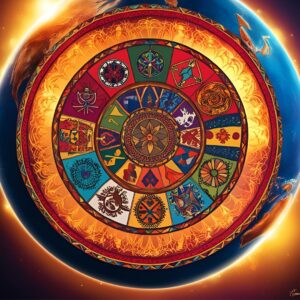
No nation can be truly sovereign if it forgets its own story. [35] Cultural sovereignty begins in the classroom, where history, civics, and the humanities teach each generation what it means to be American. [36] It is reinforced by a vibrant public sphere-media, literature, the arts-that celebrates the nation’s diversity while affirming its shared values. [37]
Policy Recommendations
Boost Civic Education Funding
Require robust civics and U.S. history curricula in public schools, with an emphasis on pluralism, critical thinking, and constitutional principles. [38]
Support Local Journalism and the Arts
Provide grants for local news outlets, museums, and libraries that preserve and share the American story at the community level. [39]
Promote National Service
Expand AmeriCorps and similar programs to foster cross-regional understanding and a sense of shared national purpose among young Americans.
Political Sovereignty: Restoring Trust and Accountability [40]
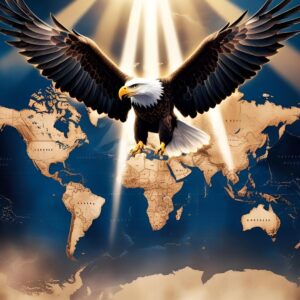
The foundation of American nationalism is the belief that the people are sovereign-that government exists to serve, not to rule. Yet, trust in institutions has eroded, and cynicism has taken root. [41] National renewal requires a recommitment to transparency, accountability, and the rule of law. [42]
Policy Recommendations
Election Integrity
Invest in secure, transparent voting systems and nonpartisan oversight to restore faith in the electoral process.[43]
Campaign Finance Reform
Limit the influence of dark money and foreign actors in American politics.[44]
Decentralization
Empower states and localities to innovate and respond to local needs, while maintaining a strong federal framework for civil rights and national defense.
The Paradox and Promise of Pluralism

America’s strength has always lain in its ability to integrate difference into a common project. E pluribus unum-out of many, one-is not just a motto but a challenge. In a nation as vast and diverse as the United States, true unity can never be imposed from above. It must be built from below, through dialogue, compromise, and the recognition of a shared destiny.
Here, too, Ukraine offers a lesson. Its pluralism is not a sign of weakness, but the wellspring of its resilience. By embracing diversity, Ukraine has become more, not less, Ukrainian. The same is true for America: only by honoring the many threads that make up its national fabric can it hope to remain strong, free, and sovereign.
Leading by Example: Sovereignty as Inspiration

Finally, if real nationalism begins at home, it must also radiate outward by example. The most effective way for America to support sovereign nations abroad is to demonstrate that sovereignty works at home. A nation that is confident in its own identity, secure in its borders, and generous in its civic life will inspire others far more than a nation that lectures or coerces.
This is not a call for retreat, but for renewal. By rebuilding its own house, America can once again become a beacon for those who seek freedom, dignity, and the right to self-determination. In this sense, the fate of Ukraine and the fate of American nationalism are intertwined. Both remind us that real sovereignty is not a gift from above, but a covenant among free people-a promise to defend what is ours, and to respect the right of others to do the same.
IV. The MAGA Dilemma: Ukraine as the Nationalist Ally MAGA Sought But Overlooked

The rise of the MAGA movement in the United States was, at its heart, a reaction to the growing sense among millions of Americans that the nation’s sovereignty, identity, and economic security were being eroded by decades of globalist orthodoxy. The movement’s call to “Make America Great Again” was not just a slogan but a demand to restore the primacy of the American nation-state: to secure borders, revive domestic industry, and reassert the right of Americans to govern themselves without interference from supranational elites or foreign interests. [45] Yet, as MAGA’s influence expanded, it faced a profound dilemma-one that would come to define its engagement with the world beyond America’s shores.
For many MAGA adherents, the search for international allies was fraught with contradiction. [46] On one hand, the movement’s rhetoric celebrated the virtues of national sovereignty, self-determination, and the defense of traditional values. On the other, it was sometimes seduced by the spectacle of strongmen abroad-figures like Vladimir Putin, who cloaked their authoritarianism in the language of tradition and order, and who presented themselves as bulwarks against the perceived moral decay of the West. [47]
Nowhere was this confusion more pronounced than in the case of Ukraine. As Russia launched its full-scale invasion in 2022, some on the American populist right hesitated, or even sympathized with Moscow, seeing in Putin a champion of Christianity and national renewal. [48] But this was a profound misreading-not only of Russia’s true nature, but of the kind of nationalism that MAGA itself professed to uphold.
The reality is that Ukraine, not Russia, embodies the very principles that the MAGA movement holds dear. Ukraine’s nationalism is not a project of imperial expansion or ethnic chauvinism, but a pluralistic, civic, and defensive assertion of sovereignty. It is a nationalism forged in adversity, rooted in the right of a people to determine their own future, protect their borders, and preserve their culture. It is, in short, the kind of nationalism that MAGA claims to champion at home.
To understand this, one must look past the caricatures and propaganda. Ukraine’s civic nationalism is the product of centuries spent at the crossroads of empires-Polish, Russian, Ottoman, Austro-Hungarian-each of which sought to erase or subordinate Ukrainian identity. The trauma of the twentieth century, from the Holodomor to Stalinist purges, taught Ukrainians the dangers of both imperial domination and enforced uniformity. Yet, rather than retreating into ethnic exclusivism, modern Ukrainian nationalism has become increasingly inclusive. Jews, Tatars, ethnic Russians, and Ukrainians of all backgrounds have united in defense of their homeland. President Volodymyr Zelensky, a Russian-speaking Jew, stands as a living refutation of Moscow’s claims that Ukraine is a hotbed of fascism or ethnic hatred.
This pluralism is not a weakness. It is a source of strength-a testament to the nation’s ability to integrate difference into a common project. In this, Ukraine’s experience echoes the American tradition of civic nationalism: a patriotism rooted not in blood or ancestry, but in shared values, mutual sacrifice, and the consent of the governed. Like the American Revolutionaries, Ukrainians are fighting for the right to speak their own language, honor their own history, and govern themselves without foreign interference.
Yet, some on the American right have been drawn to Russia’s image of “order” and “strength.” They see in Putin a leader who resists Western progressive social trends, invokes Christianity, and promises to restore national greatness. But this is a carefully constructed mirage. The Russian Orthodox Church, far from being a bastion of spiritual renewal, is tightly controlled by the state. Religious dissent is punished, minorities are persecuted, and the language of tradition is used not to inspire, but to intimidate and suppress. This is not the conservatism of the American Founders, who enshrined religious liberty as a fundamental right. It is the authoritarianism of czars and commissars, repackaged for a new era. [49]
Ukraine, by contrast, has demonstrated that true national strength lies not in repression, but in freedom. Its open debates, vibrant civil society, and sometimes chaotic democracy are not signs of weakness, but of health. When faced with invasion, Ukraine did not turn to dictatorship; it doubled down on democracy. Local governments, volunteer organizations, and ordinary citizens all played a role in the national defense. This is the spirit of 1776, not 1984-a nation of free people, not subjects of a centralized state.
Moreover, Ukraine’s nationalism is fundamentally defensive. It does not seek to export its model, redraw its neighbors’ borders, or impose its values by force. It asks only to be left alone-to govern itself, protect its language, and remember its history. This is the very essence of the MAGA worldview: sovereignty, not supremacy; borders, not empire. In a world where expansionist nationalism has so often led to tragedy, Ukraine stands as a reminder that patriotism can be a force for peace and resilience.
From a strategic perspective, supporting Ukraine is not an act of globalist adventurism, but a reaffirmation of the principle that nations have a right to exist and defend themselves. A sovereign, democratic Ukraine serves as a bulwark against Russian imperialism and authoritarian influence in Europe. It strengthens the international order that has, for all its flaws, preserved peace and prosperity for generations.
Morally, Ukraine’s struggle is a rebuke to both technocratic globalism and imperial aggression. It is a reminder that the nation-state remains the best protector of liberty, culture, and self-government. For the MAGA movement, which seeks to restore American greatness through renewed sovereignty, Ukraine is not a distraction but an inspiration-a living example of what it means to fight for one’s country, one’s community, and one’s way of life.
The lesson for the American right is clear: the true nationalist ally is not the autocrat who promises order, but the free people who demand dignity. Ukraine’s struggle is America’s struggle, and its victory will be a victory for the cause of national sovereignty everywhere. If the MAGA movement is to remain true to its own principles, it must recognize in Ukraine not a pawn in a great-power game, but a partner in the deeper, older struggle for the right of nations to be free.
In the end, the MAGA dilemma is not a choice between isolation and intervention, or between tradition and modernity. It is a choice between two visions of nationalism: one rooted in domination and fear, the other in freedom and self-determination. Ukraine, with all its flaws and all its courage, stands as a living answer to that choice-a reminder that real nationalism begins at home, but its defense is a universal imperative.
V. The Practical Lessons for America First

Ukraine’s struggle is not just a distant war, but a living case study in the costs and rewards of real sovereignty. [50] For the American right, and for all who believe in the promise of “America First,” the lessons are both sobering and inspiring.
First, sovereignty is not a slogan but a discipline. It means making sacrifices, defending borders, investing in national culture, and sometimes standing alone when allies falter. Ukraine’s example shows that sovereignty is not given-it is earned, often at great cost. America must rediscover this discipline: by rebuilding its manufacturing base, securing its borders, and restoring the primacy of its Constitution and civic traditions.
Second, true nationalism is pluralistic and civic, not ethnic or exclusionary. Ukraine’s pluralism is its strength, not its weakness. America, too, must resist the temptations of nativism and instead build a civic nationalism rooted in shared values, mutual respect, and equal citizenship. This means investing in education, protecting minority rights, and telling the truth about America’s own complex, sometimes painful history.
Third, supporting sovereign allies is not “globalist adventurism,” but a defense of the very principle that underpins American greatness. [51] Aid to Ukraine should be framed not as charity or imperial meddling, but as solidarity with those who fight for the right to choose their own destiny. This requires a new language of partnership-one that respects the agency of America’s friends and does not demand subservience in exchange for support.
Fourth, America must reject the false allure of authoritarian “order.” The chaos of democracy, the messiness of pluralism-these are not signs of decay, but evidence of a living, breathing nation. The MAGA movement should draw inspiration from Ukraine’s vibrant civil society, its spontaneous volunteerism, and its refusal to trade freedom for the illusion of stability. [52]
Fifth, America must lead by example, not by imposition. The most powerful argument for American nationalism is not found in lectures or sanctions, but in the renewal of American institutions, the restoration of trust in government, and the cultivation of a culture that values both liberty and responsibility. By showing that sovereignty works at home, America can inspire others abroad.
Actionable Recommendations
Reframe foreign policy
Support for Ukraine and other embattled democracies should be presented as a defense of sovereignty and self-determination, not as an extension of American hegemony.
Invest in civic education
Both at home and through international partnerships, prioritize education that teaches the value of pluralism, critical thinking, and national history.
Promote economic independence
Encourage advanced domestic manufacturing, energy diversification towards greater independence, and technological innovation to reduce reliance on adversarial powers.
Strengthen alliances of sovereign nations
Build coalitions based on mutual respect for borders and self-government, rather than on ideological conformity or regime change.
Model pluralism and resilience
Celebrate the diversity and resilience of American society, drawing lessons from Ukraine’s ability to unite across lines of language, faith, and region. [53]
In short, the lesson of Ukraine is that real nationalism is hard work. It demands courage, honesty, and a willingness to stand for principle even when it is inconvenient. It is not about domination or nostalgia, but about building a future in which every nation can flourish on its own terms. [54]
VI. From Kyiv to Kansas, Sovereignty is Sacred

The war in Ukraine is not just a test of NATO or a referendum on Russian aggression. It is a test of whether nationalism can be a force for good in the 21st century. Ukraine says yes-and does so not in lectures but in blood.
Its nationalism is not a threat to the world, but a blueprint for how nations can survive against odds. Its fight is not just for territory, but for memory. Its alignment with the MAGA worldview is not one of alliance, but of resemblance: a sovereign people insisting they will not be ruled by foreign elites.
The American right should see in Ukraine not a neocon adventure, but a nationalist mirror. The left, of course, will see only what it wants to. But for those who still believe that borders matter, that culture is worth defending, and that sovereignty is sacred-Ukraine stands not as a pawn but as a partner in a deeper ideological war.
Real nationalism begins at home. But it does not end there.
References
- Plokhy, Serhii. The Gates of Europe: A History of Ukraine. New York: Basic Books, 2017.
- Snyder, Timothy. The Reconstruction of Nations: Poland, Ukraine, Lithuania, Belarus, 1569-1999. New Haven: Yale University Press, 2003.
- Yekelchyk, Serhy. Ukraine: What Everyone Needs to Know. New York: Oxford University Press, 2020.
- Marples, David R. Heroes and Villains: Creating National History in Contemporary Ukraine. Budapest: Central European University Press, 2007.
- Wilson, Andrew. The Ukrainians: Unexpected Nation. 4th ed. New Haven: Yale University Press, 2015.
- Kulyk, Volodymyr. “Language and Identity in Ukraine after Euromaidan.” Europe-Asia Studies 68, no. 4 (2016): 588–608.
- Shevel, Oxana. “The Politics of Memory in a Divided Society: A Comparison of Post-Franco Spain and Post-Soviet Ukraine.” Slavic Review 70, no. 1 (2011): 137–164.
- Motyl, Alexander J. “The Surprising Success of Ukrainian Nationalism.” Foreign Affairs, March 9, 2022.
- Applebaum, Anne. “Why Ukrainians Are Dying for Independence.” The Atlantic, March 2022.
- “Ukraine’s Language Law: Balancing Identity and Minority Rights.” Carnegie Europe, July 6, 2023.
- Troianovski, Anton, and Andrew E. Kramer. “Volodymyr Zelensky, Ukraine’s Comic President, Faces the Realities of War.” The New York Times, February 26, 2022.
- Harding, Luke. “Zelensky: Ukraine’s Reluctant Wartime Leader.” The Guardian, March 19, 2022.
- Walker, Shaun. “How Zelensky Defied Putin and United Ukraine.” The Guardian, March 17, 2022.
- Kramer, Andrew E. “Zelensky’s Unlikely Journey from Comedian to Wartime President.” The New York Times, April 23, 2022.
- “Volodymyr Zelensky: From Comedian to National Hero.” BBC News, February 28, 2022.
- Dugin, Alexander. The Foundations of Geopolitics: The Geopolitical Future of Russia. Moscow: Arktogeya, 1997.
- Laruelle, Marlene. Russian Nationalism: Imaginaries, Doctrines, and Political Battlefields. London: Routledge, 2018.
- Clover, Charles. Black Wind, White Snow: The Rise of Russia’s New Nationalism. New Haven: Yale University Press, 2016.
- Snyder, Timothy. The Road to Unfreedom: Russia, Europe, America. New York: Tim Duggan Books, 2018.
- Tolz, Vera. “The Search for National Identity in the Russian Federation.” Europe-Asia Studies 50, no. 6 (1998): 993–1022.
- Paul Goble, “Eurasianism and the Russian World.” Jamestown Foundation, Eurasia Daily Monitor, February 10, 2021.
- Ioffe, Julia. “What Putin Really Wants.” The Atlantic, January/February 2018.
- Lucas, Edward. “Russia’s Imperial Instinct.” The Economist, March 19, 2022.
- Walker, Shaun. “Alexander Dugin: The Far-Right Mystagogue Behind Putin’s Ukraine War.” The Guardian, April 9, 2022.
- Domestic Manufacturing, Economic Sovereignty, and Policy
- Pisano, Gary P., and Willy C. Shih. “Restoring American Competitiveness.” Harvard Business Review 87, no. 7/8 (2009): 114–125.
- Atkinson, Robert D., and Stephen J. Ezell. Innovation Economics: The Race for Global Advantage. New Haven: Yale University Press, 2012.
- “America’s New Industrial Policy.” The Economist, August 13, 2022.
- Tankersley, Jim, and Ana Swanson. “Biden Signs Bill to Boost U.S. Chip Manufacturing.” The New York Times, August 9, 2022.
- “The U.S. Needs a National Industrial Strategy.” Foreign Policy, May 12, 2021.
- “How the U.S. Lost Out on iPhone Work.” The New York Times, January 21, 2012.
- “How Ford and Tesla Are Leading the U.S. EV Revolution.” Wall Street Journal, February 2023.
- “The CHIPS Act Explained.” The Wall Street Journal, July 28, 2022.
- “Operation Warp Speed: Accelerated COVID-19 Vaccine Development Status and Efforts to Address Manufacturing Challenges.” U.S. Government Accountability Office, January 2021.
- Levinson, Meira. No Citizen Left Behind. Cambridge: Harvard University Press, 2012.
- “Civic Education and Democracy in America.” Pew Research Center, May 2020.
- Ravitch, Diane. The Death and Life of the Great American School System. New York: Basic Books, 2010.
- Putnam, Robert D. Bowling Alone: The Collapse and Revival of American Community. New York: Simon & Schuster, 2000.
- “The Case for Civic Education.” The Atlantic, March 2021.
- “Why Local News Matters.” Columbia Journalism Review, Fall 2019.
- Fukuyama, Francis. Political Order and Political Decay: From the Industrial Revolution to the Globalization of Democracy. New York: Farrar, Straus and Giroux, 2014.
- Levitsky, Steven, and Daniel Ziblatt. How Democracies Die. New York: Crown, 2018.
- “How to Fix American Democracy.” The Economist, January 15, 2022.
- “Election Security in the United States.” Brennan Center for Justice, 2022.
- “The Problem of Dark Money in U.S. Elections.” OpenSecrets.org, 2023.
- Judis, John B. The Populist Explosion: How the Great Recession Transformed American and European Politics. New York: Columbia Global Reports, 2016.
- Kirk, Charlie. The MAGA Doctrine: The Only Ideas That Will Win the Future. New York: Broadside Books, 2020.
- Lind, Michael. The New Class War: Saving Democracy from the Managerial Elite. New York: Portfolio, 2020.
- Saldin, Robert P., and Steven M. Teles. Never Trump: The Revolt of the Conservative Elites. New York: Oxford University Press, 2020.
- “How MAGA Nationalism Differs from Old-School Conservatism.” The Atlantic, July 2022.
- “Ukraine’s Fight for Freedom Is the World’s Fight.” The Washington Post, February 24, 2023.
- Mearsheimer, John J. “Why the Ukraine Crisis Is the West’s Fault.” Foreign Affairs 93, no. 5 (2014): 77–89.
- Kagan, Robert. “The Price of Hegemony: Can America Learn to Use Its Power?” Foreign Affairs, March/April 2023.
- “Why Ukraine Matters to the West.” The Economist, March 2022. “How the Ukraine War Is Reshaping the World.” Financial Times, February 2023


No responses yet